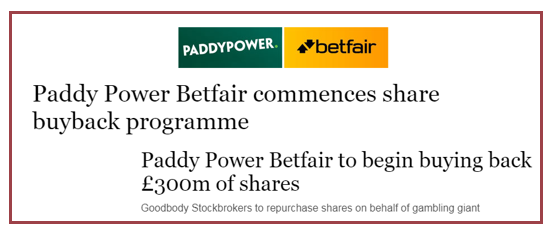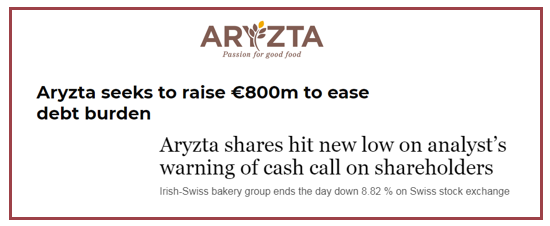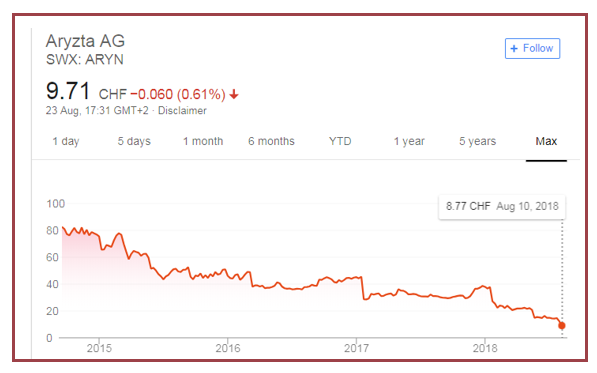Real World Reads – Capital Structure Decisions

Funding a business with an appropriate capital structure is a crucial part of any company’s financial management. Funding requirements for a business can vary from day to day operations to capital expenditure and new business acquisitions. The variety of sources of finance with respect to term (e.g. short, medium, and long) and type of finance (e.g. debt, equity, mezzanine) can create a multitude of decisions when deciding on an optimal capital structure for a business.
Every business is different in terms of the optimal capital structure (depending on the level of assets, cashflow generation, management risk aversion to name a few considerations) but, in general, too much debt in a capital structure reduces strategic flexibility and create a risk of financial distress, which can distract from running the business. On the other hand, too little debt can result in an inefficient and costly capital structure as the business misses the tax benefits and lower cost of capital associated with debt finance.
PaddyPower Betfair and Aryzta provide two useful (and contrasting) examples of recent strategic decisions about a company’s capital structure;
PaddyPower Betfair

PaddyPower Betfair included in their results announcement in March 2018 a plan about their target capital structure. The stated plan is to go from a net cash position of £244m in Dec 2017 towards a net debt (debt less any cash) position of between 1x and 2x EBITDA. Based on current expected full year EBITDA for 2018 of between £460-480m that means an objective of net debt of between £460 and 960m which means a significant amount of capital to be returned to shareholders. As part of this initiative, the company announced a £500m share buyback programme in May to return capital to shareholders which is currently underway. This is in addition to the regular dividend the company pays each year.
This is a good example of a company looking at their capital structure and seeing the potential (or debt capacity) to take on some debt to improve the “efficiency of their capital structure”. In practice, the debt capacity of firms is often measured as a multiple of EBITDA.
Key Links
- FY 17 Prelim results announcement – March 2018 (See top of page 6 – ‘Target Capital Structure’)
- Interim Results – May 2018 (See bottom of page 5 – ‘Capital Structure’)
- Irish Independent – May 2018 ‘Paddy Power Betfair commences share buyback programme’
Aryzta

Arytza, the owners of Cuisine de France, are an example of capital structure decisions at the other end of the spectrum. The company has had a very difficult number of years with troublesome acquisitions, management upheaval, and a significant fall off in profitability. The graph below highlights the significant decline of the share price over the past number of years;

The company announced a €1bn deleveraging plan including over €450m of asset disposals to help address its €1.6m debt pile. In recent months, it also announced plans to raise up to €800 million of equity capital through a rights issue to pay down some of its debt “to create the necessary strategic and financial flexibility to implement its business plan”.
As of January 2018, the company had a net debt to EBITDA of 4.2x with several adjustments made to banking covenants in recent times to allow headroom for the deteriorating financial performance of the business – EBITDA has fallen from €638m in 2015, €610m in 2016, €420m in 2017 and 2018 expected to be around €300m.
This provides a clear contrast to the PaddyPower Betfair example above. Here we have a company with too much debt in its capital structure (due to poor acquisitions and deteriorating business performance) which is no longer sustainable. The cost of financial distress (e.g. renegotiating banking covenants, customer/supplier unrest due to financial uncertainty) are weighing heavy on the business and it needs to readjust its capital structure (i.e. reduce the debt) to allow it some headroom to turn around the business.
Key Links

no comments